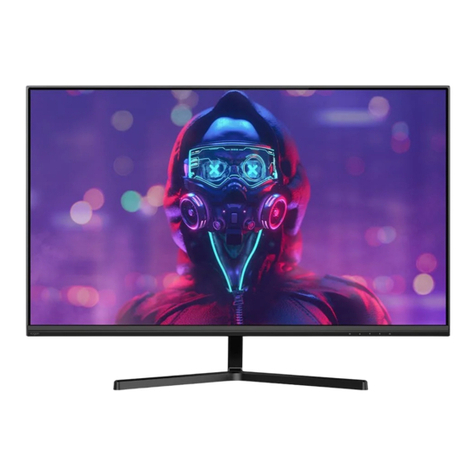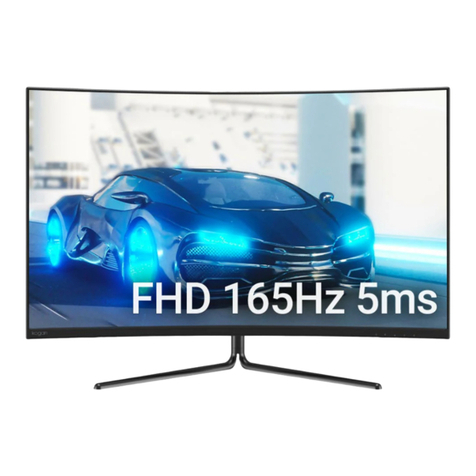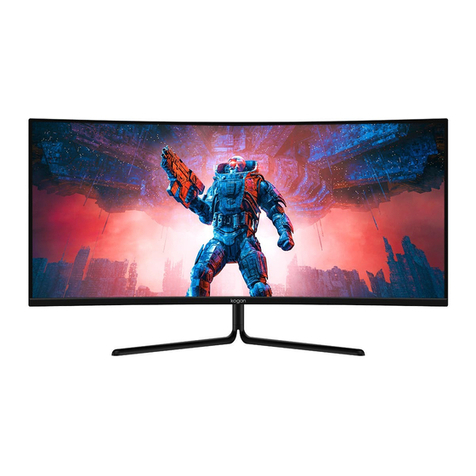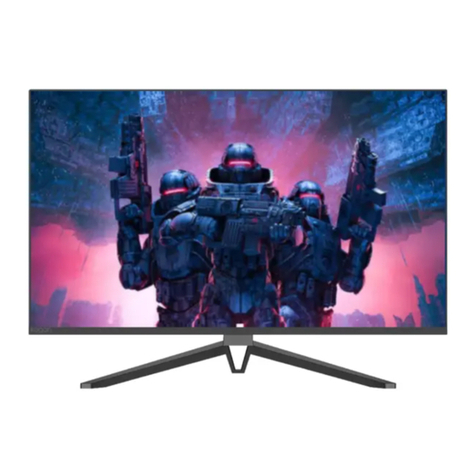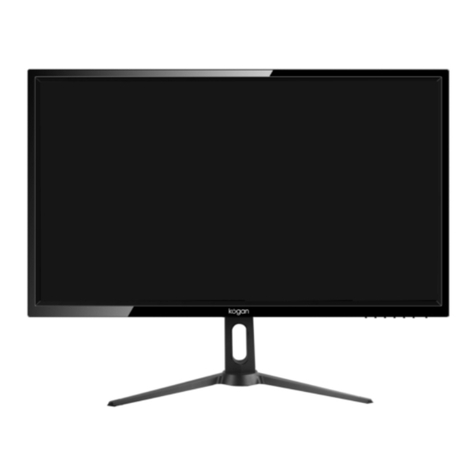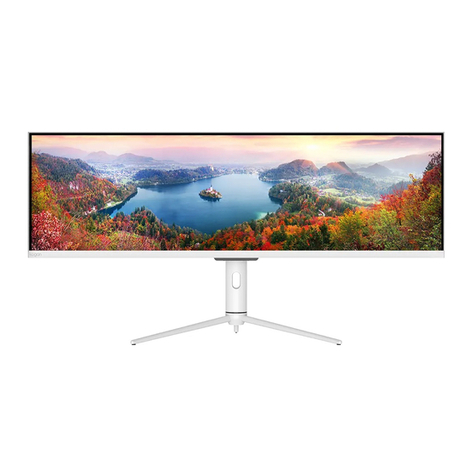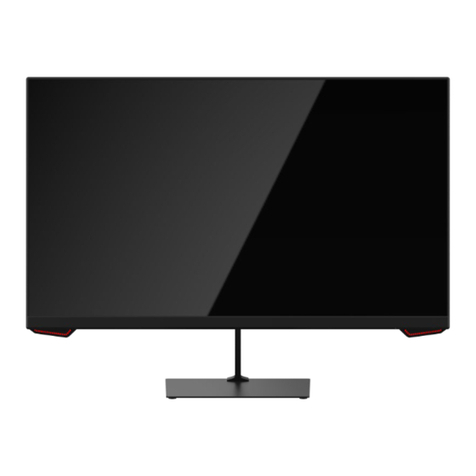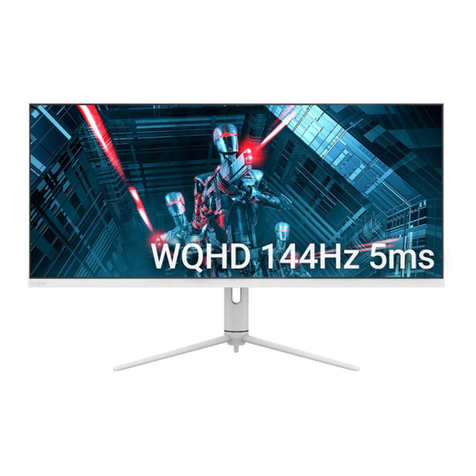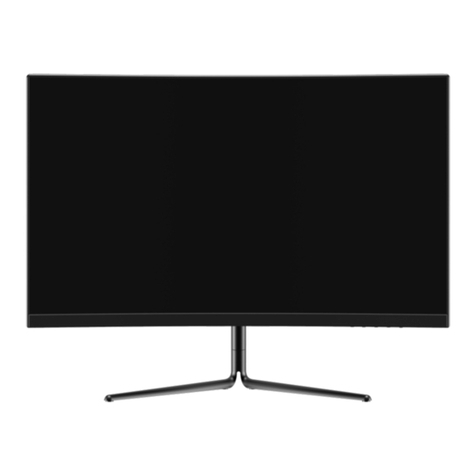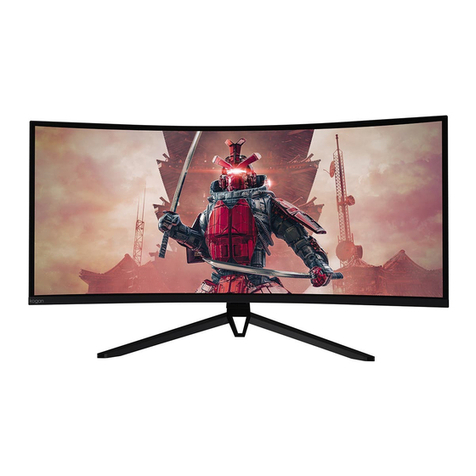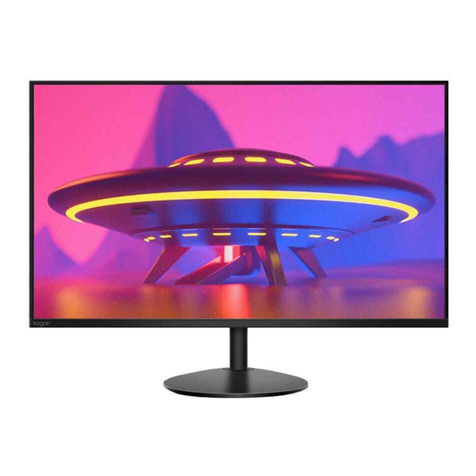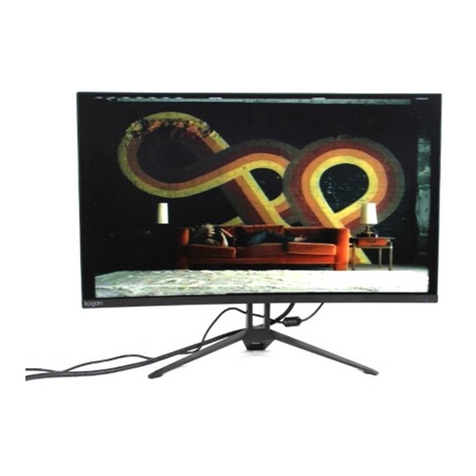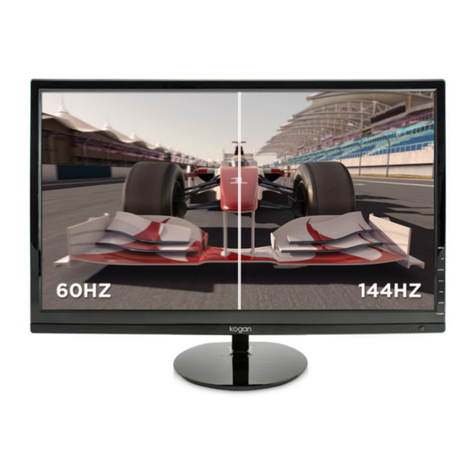FCC Radio Frequency Interference Statement
This monitor has been tested and found compliant with the limits for a Class B digital
device, pursuant to part 15 of the FCC Rules. These limits are designed to provide proper
protection against harmful interference to a residential installation. This monitor generates,
uses, and can radiate radio frequency energy. Harmful interference to radio communication
may be led as a result if it‘s not properly installed and used. However, there is no guarantee
that interference will not occur in a particular installation. If this monitor does cause serious
interference to radio or television reception, resetting the monitor may determine it.
Moreover, users are encouraged to correct interference by doing one or more of the
following:
•Reorient or relocate the receiving antenna.
•Move the monitor and the receiver further away from each other.
•Connect the monitor into an outlet on a circuit different from that to which the
receiver is connected.
•Consult your local dealer or an qualified technician.
Safety Precautions
•This monitor is manufactured and tested on the principle that a user’s safety comes
first. Improper use or installation may result danger to the monitor as well as to the
user. Carefully go over the following WARNINGS before installation and keep this
guide handy.
•This monitor should be operated only at the correct power sources indicated on the
label on the rear end of the monitor. If you’re unsure of the power supply in your
residence, consult with your power company.
•o not try to repair the monitor yourself as it contains no user-serviceable parts. The
monitor should only be repaired by a qualified Kogan technician.
•o not remove the monitor cabinet. There is high-voltage parts inside that may
cause electric shock to human bodies, even when the power cord is disconnected.
•Stop using the monitor if the cabinet is damaged. Contact the Kogan customer
support team for advice.
•Put your monitor in a clean, dry environment. Unplug the monitor immediately if gets
wet and contact the Kogan customer support team.
•Always unplug the monitor before cleaning it. Clean the cabinet with a clean, dry
cloth. Apply non-ammonia based cleaner onto the cloth, not directly onto the glass
screen.
•Keep the monitor away from magnetic objects, motors, TV sets, and transformers.
•o not place heavy objects on the cable or power cord.
•For displays with glossy bezels the user should consider the placement of the
displays as the bezel may cause disturbing reflections from surrounding light and
bright surfaces.
•ue to safety concerns, if the VESA mounting kit is purchased separately, please
make sure the mounting kit is UL-Listed, and replaceable only by service personnel.
2
